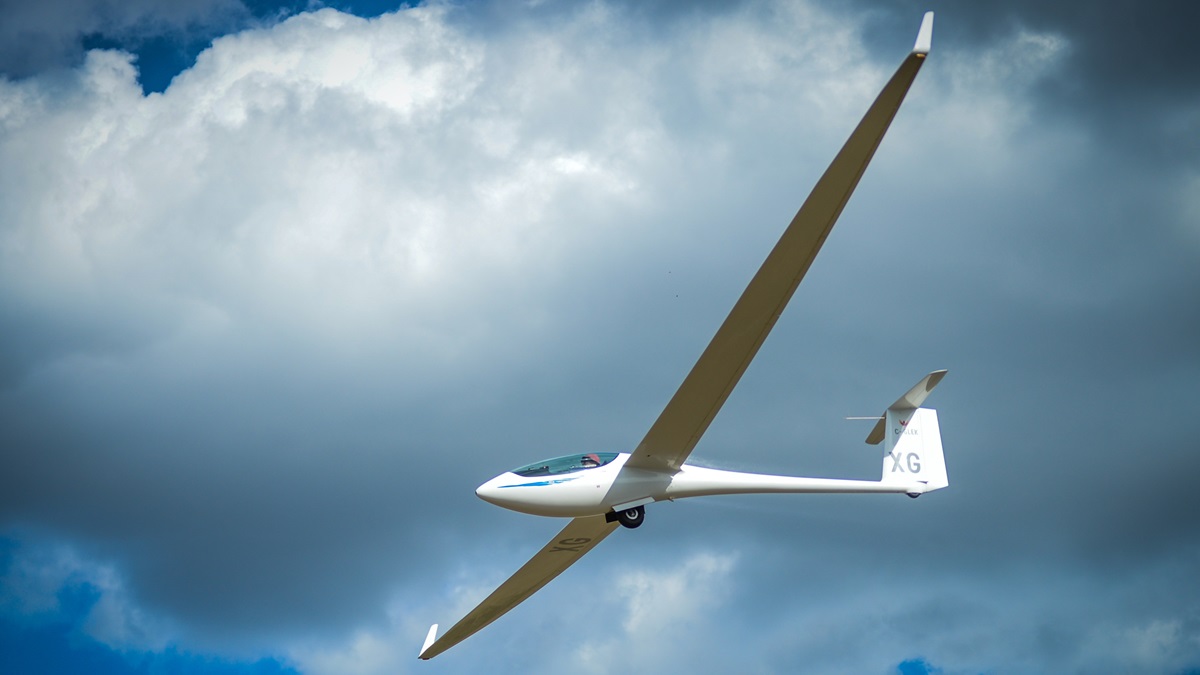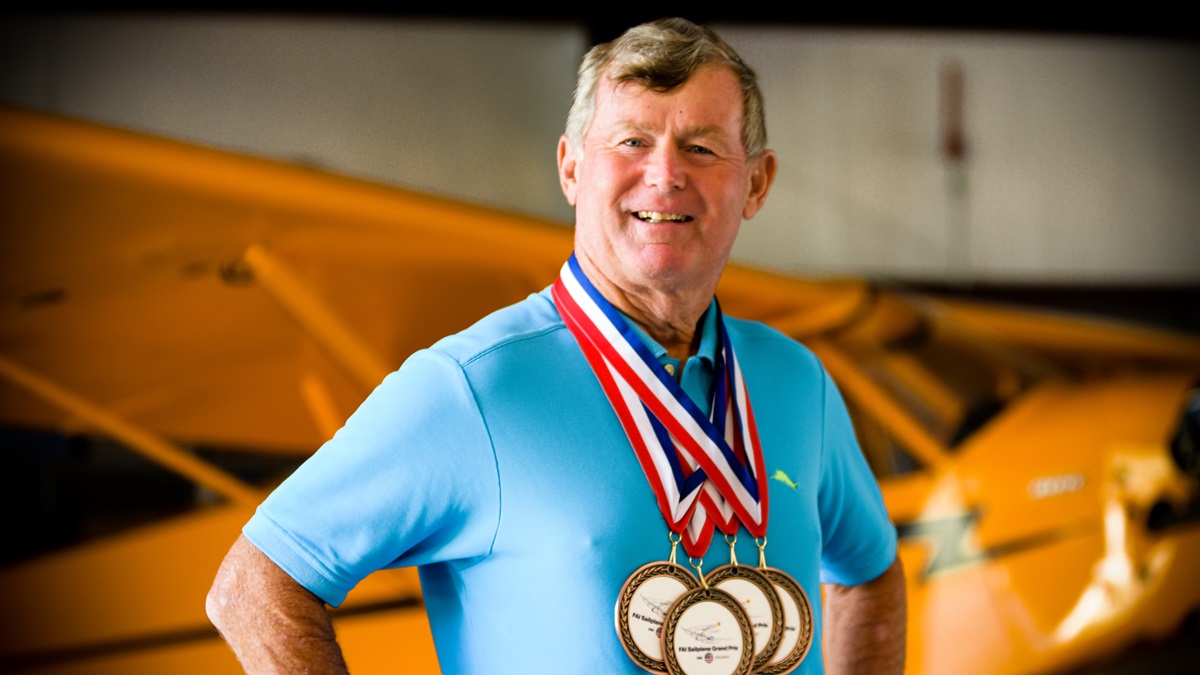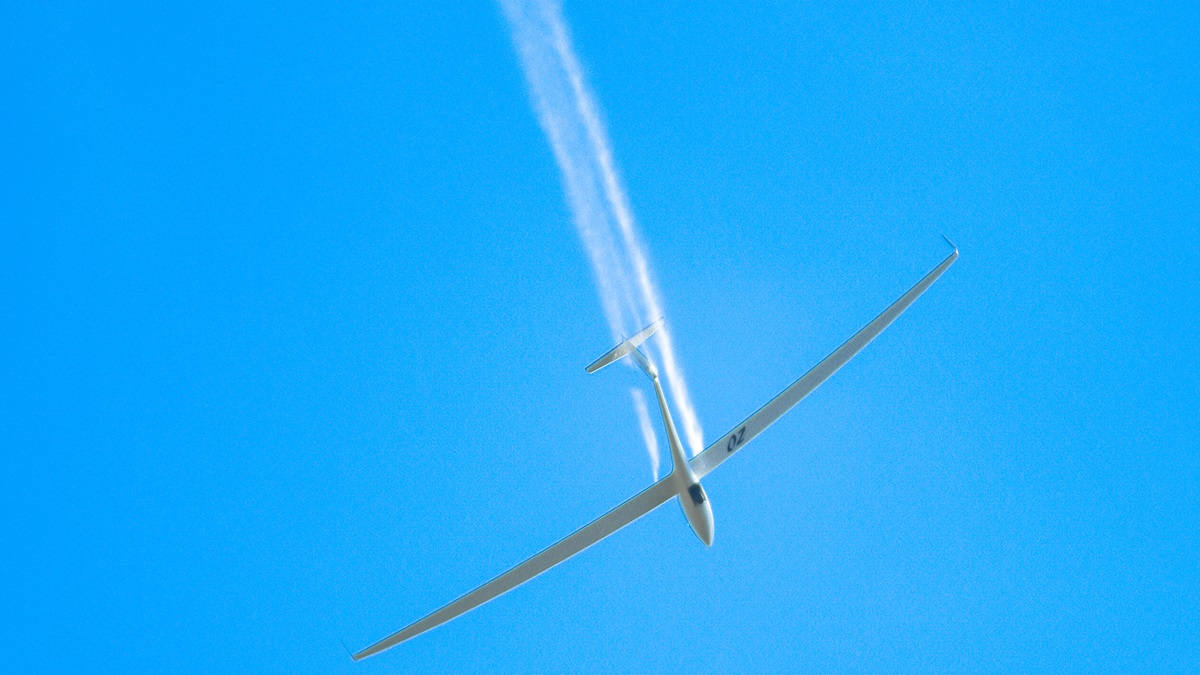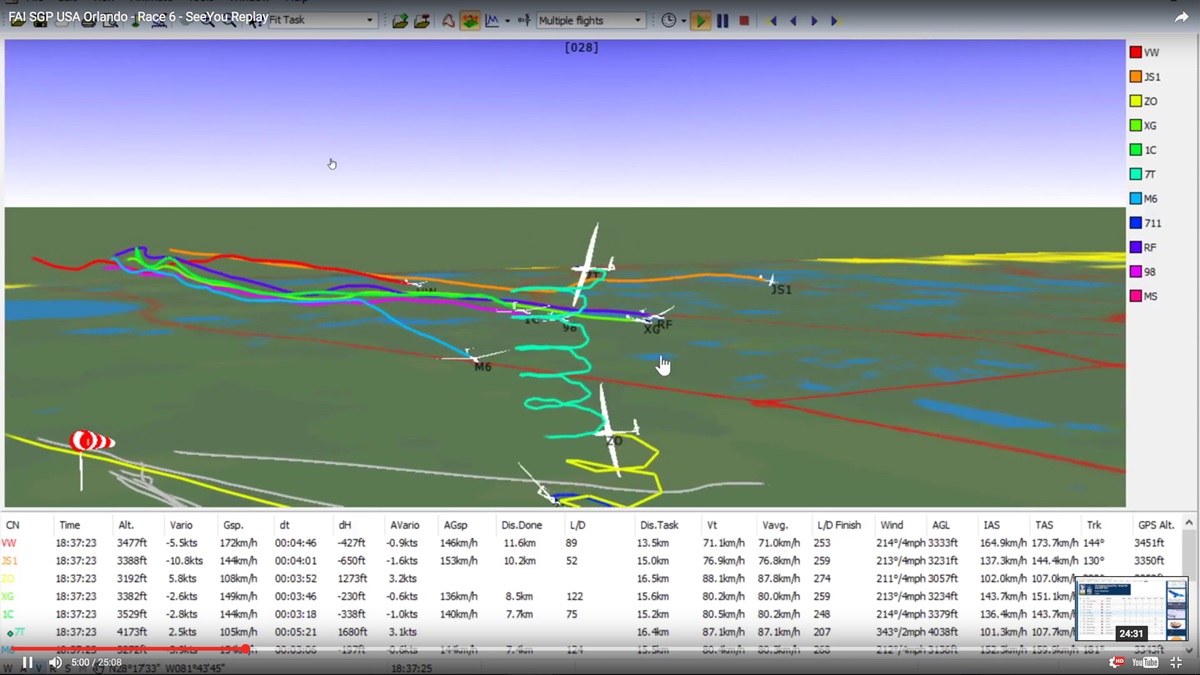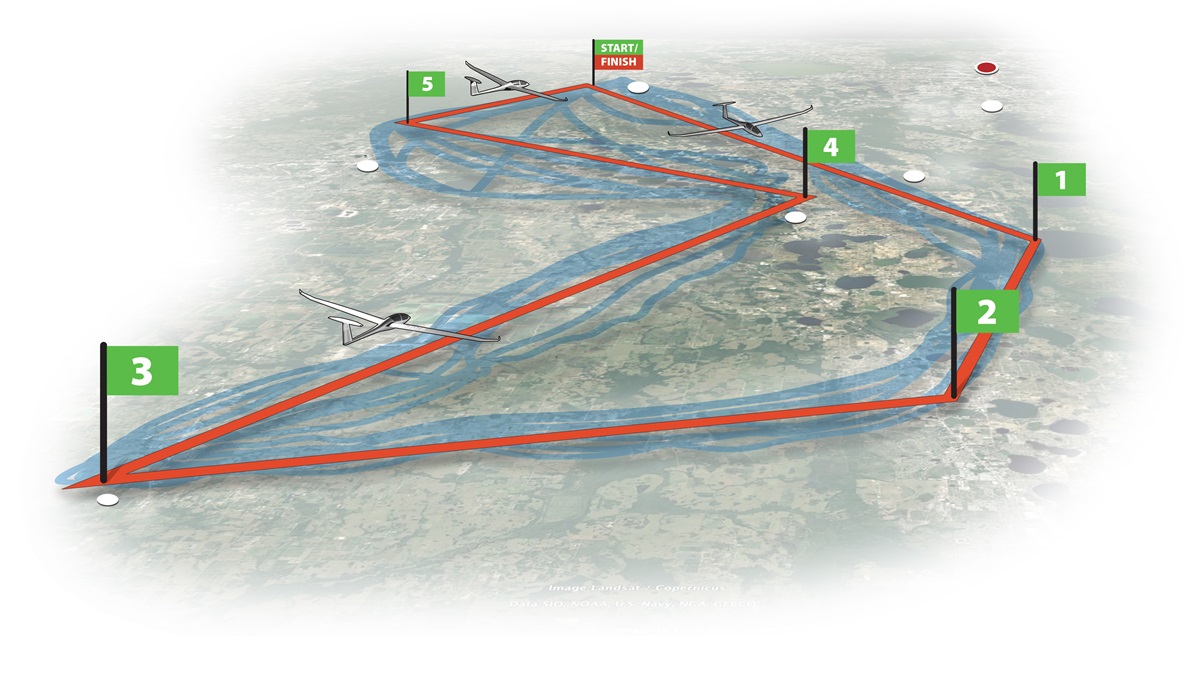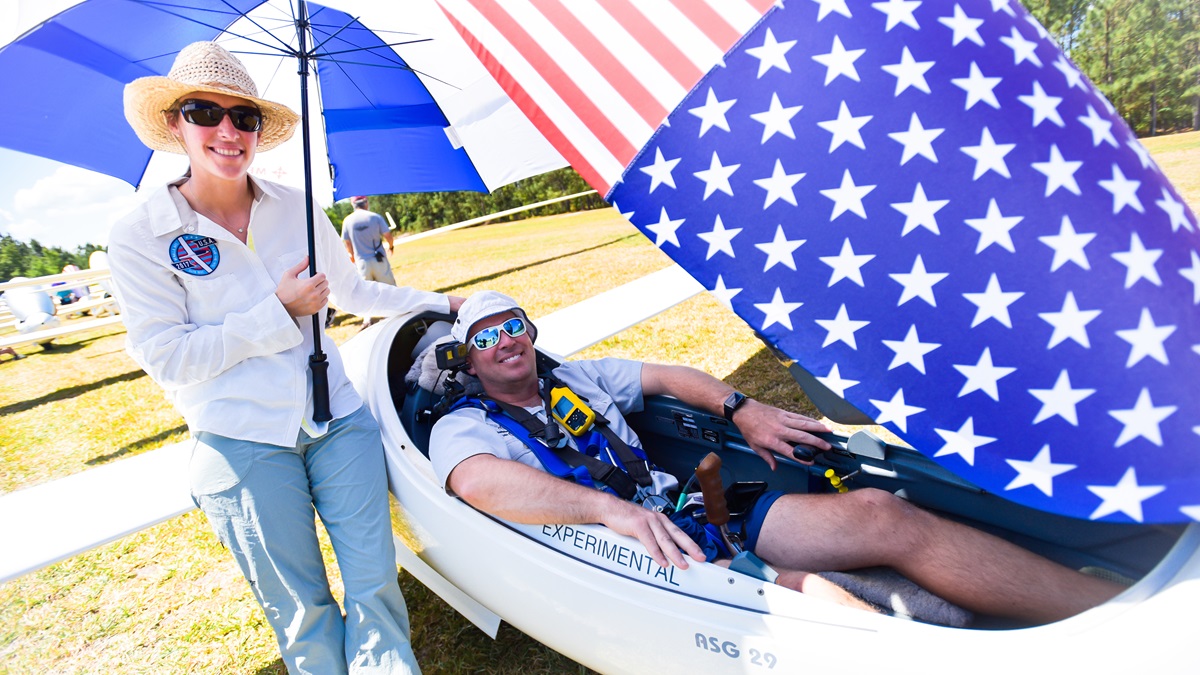On silent wings
Competing in the Sailplane Grand Prix
By Charles Petersen
Photography by Maria Szemplinska
Retired Navy Cmdr. Richard Owen is at his assigned position on the launch grid. He has been, with the others, weighed to ensure he is not too heavy, which would unfairly advantage him. After he has programmed the task, a list of turnpoints, into his computer, and checked it several times, he focuses on relaxing until the start—his thorough preparation gives him the confidence to do so.
The pilots strap on their parachutes, and Owen climbs into the tight cockpit—much smaller than that of the F/A–18 he used to fly. The panel is crowded with small but sophisticated instruments. He belts up and goes through his preflight checklist, waiting for the start of the Fédération Aéronautique Internationale Sailplane Grand Prix USA - Orlando competition, held at Seminole Lake Gliderport in Clermont, Florida.
Owen’s call sign in the U.S. Navy was “Micro,” earned for expending eight of his lives—and his impellent need to micromanage his ninth. Navy flying was some of the most challenging flying that Owen has ever done. The exacting skill of landing on an aircraft carrier, the intense fellowship, and the metrics of having each landing scored in the ready room made for a combination that was hard for Owen to replace in his post-Navy flying. It wasn’t the same flying as a pilot for Delta Air Lines. But find it he did, in a surprising place.
Owen began flight lessons at age 15, paying $17 an hour for dual instruction, and then $12 an hour for solo flight with money he earned. By 18, he had added a commercial certificate and multiengine and instrument ratings, and was flying for a living. At 22 he secured a place at the U.S. Navy’s Aviation Officer Candidate School at Naval Air Station Pensacola, Florida, where he had more time on jets than his instructor. It was only natural that he was assigned to fighters.
After his Navy retirement Owen continued earning his living as an airline pilot. But to replace the fellowship, the challenge of a never fully mastered skill, and the metrics of performance, he learned to fly—and then to race—gliders. Elite pilots can race these engineless aircraft at speeds and over distances that amaze—powered by gravity and fueled by atmospheric energy, with never-exceed speeds greater than 150 knots.
Pure speed
To understand a glider, think of a bicycle with no pedals. To go forward it must go downhill. And the steeper the hill, the faster it goes. So the soaring pilot must climb to regain potential energy, using one of several sources of rising air: thermals, ridge lift, lee mountain wave, or convergence. Climb, then glide—at a ratio that can exceed 50:1—and repeat. Climb better and, therefore, faster than other pilots, and you’ll spend less time climbing and more time gliding. Find the best energy, and use it as efficiently as possible to fly faster and farther.
Racing enthusiast and competitor Sean Fidler notes, “Soaring is the only accessible form of aviation that allows competitive flying, records, and the associated challenges. The competition quality is exceptional and broad.” Glider contests range from low-intensity and highly social interclub competitions to the FAI World Gliding Championships. Most are too remote for a spectator to easily observe, and for the uninitiated the rules are challenging to understand. For many competitions pilots fly at different times, on different routes. A GPS flight computer takes a fix every few seconds, and after the finish, the total qualifying distance is divided by the time (or the minimum time) to determine a speed. This is then adjusted by a handicap factor that is supposed to even out the performance among differing types of gliders, and the handicap speed is used to rank the pilots. Repeat for a few days to a couple of weeks, add up the points, and determine a winner.
The Sailplane Grand Prix, which started with experimental events in 2001 and 2003 and became an official FAI event in 2005, is like a yacht regatta. All the pilots start at the same time and altitude over a straight starting line. They are equalized for performance, by wingspan, and by wing loading, with the lighter-loaded gliders permitted to add water ballast in the wing tanks to bring them up to the wing loading of the heaviest. Even in the moderate conditions found over the flatlands of the eastern United States, these sailplanes average more than 80 mph for distances of as much as 200 miles, chasing each other through small turnpoint cylinders defined by a 500-meter radius. They tend to fly much closer together, and the first pilot to cross the finish line wins. It’s a pure speed event.
Gliders start and finish close to the airport at the spectator-friendly contests, and thousands around the world can watch the gliders’ positions online in real time. And like a yacht-racing broadcast, a color commentator and host can add details on the subtleties and the contestants.
The pilots will fly for only 90 minutes to two hours, in the heat of the day. With a maximum field of 20 gliders, points are awarded to the top 10 competitors in order of finish. This contest is designed to be more ruthless than conventional racing, giving points only to the first 10 finishers. The winner gets 10 points plus one bonus point for winning the day; second gets nine points, third eight, and so on. Finishing in eleventh place is no better than twelfth—or last. No points there.
Sailplane Grand Prix races in 2017 were scheduled in Australia, the United States, South Africa, Spain, Poland, Italy, France, Slovakia, and Slovenia. Competitors come from many nations; some follow the circuit to two or more of the events. The top two finishers at each national event qualify for a spot at the Eighth FAI Sailplane Grand Prix World Final in Vitacura, Chile, in January 2018.
Winning strategies
Owen is competing in the Sailplane Grand Prix USA 2017 at Seminole Lake Gliderport in Central Florida—only the second time a Grand Prix event has been staged in North America. Following the daily pilot meeting held in the hangar, which includes a safety briefing, the weather outlook, and a review of the previous day’s winning strategy, the gliders are towed down to the launch grid. The contest director distributes task sheets—the list of turnpoints selected for the day’s route. The pilots go to their assigned positions on the launch grid and wait.
A 200-foot line hooked to a Piper Pawnee is attached to the nose of Owen’s ASG 29 Es glider, the slack taken up, and the all-out signal given to begin the launch. They climb together, tug and glider, at 700 to 1,000 feet per minute until Owen releases the tow at 2,000 feet agl, joins the gaggle—as a flock of gliders circling in a thermal is called—and climbs.
The start line is five kilometers long, perpendicular to the first turnpoint, with a restricted semicircle on the side away from the first turnpoint. The competitors must ensure they are on the semicircle side of the line one minute before the start, and observe rules designed to minimize collision risks and maintain order. Then, closely monitoring their altitude, position, and speed, they time their spoilers to scrub off extra altitude and cross the line at a designated time, maximum altitude, and a maximum groundspeed line abreast. Starting too early will incur a costly penalty.
Owen stays with the pack, joining the gaggles that mark the center of the lift for the later arrivals. There is a distinct disadvantage to being ahead of the pack, since the first pilot to turn into a thermal will take a few turns to find the strongest part of the lift, called the core; pilots arriving just after will not have to spend a couple of low-yield turns to center.
Sometimes the sailplanes fly close together, perhaps as close as 100 feet nose to tail in a gaggle, but on the run between thermals they may take differing routes. Then, like breaking from the peloton in a bicycle race, the critical strategic decision will be when to make a break for a sprint to get ahead. Flying out alone and being less efficient centering the thermals too soon is not a winning strategy, nor is simply staying in the middle of the pack without choosing when to try to dash ahead.
Competitors also must assess which thermals to select: Some are outstanding, most average, and a couple weak. For Owen, a hope for a good climb that doesn’t materialize validates the maxim: “Hope is not a strategy.” Owen earns a third-place finish the first two days, and again the fifth and sixth days, but a disappointing ninth and eighth the third and fourth days. He finishes fifth overall, missing the podium. Defending champion Canadian Jerzy Szemplinski wins the event, also flying an ASG 29. He and second-place finisher Sean Fidler advance to the world final.
World championship dreams aside, glider racing is where Owen and many other pilots find the challenge of mastering an elusive skill, the metric of the score, and the fellowship of a small community who call themselves contest pilots. And there’s always next year.
Charles Petersen is a flight instructor and aerobatic instructor in gliders, with more than 2,300 hours.
